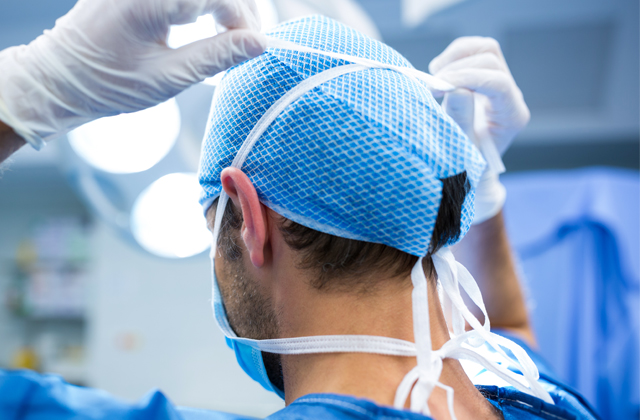What is Microsurgery and What is Used For?
Microsurgery is a specialized surgical technique, performed under a microscope. Many plastic surgeons use microsurgery devices to perform specific procedures, including transfer of tissue from one part to another part of the body, reattaching the severed parts and composite tissue transplantation.

What is microsurgery used for?
Microsurgery is a surgical technique that uses a high-powered microscope and specialized instruments to perform intricate and delicate procedures on small structures such as blood vessels, nerves, and other tissues that are too small to be seen with the naked eye. In recent times, the procedures that use microsurgical techniques include nerve repair, nerve grafting, blood vessel repair, vascular grafting and free tissue transfers. Plastic surgeons also use microsurgery for lymphedema (swelling due to build-up of lymph fluid in the body) and limb preservation efforts. The technique is very useful for helpful in the reattachment or replantation of amputated body parts. Most importantly, microsurgery has now become a essential procedure in the field of neurosurgery, and in the treatment of cancerous tumours as well as vascular abnormalities found in the brain.
Performance of microsurgery
When performing microsurgery, the surgeon examines the structure of the body they are operating on using a microscope rather than by gazing directly at it. Surgeons use specialized operating microscopes and precision instrumentation when repairing these complex structures of the body. Some microsurgery is done with high-powered microsurgical loupes that surgeons wear on glasses. Other equipment involved includes a bright light source, forceps and other instruments designed for precision and to prevent the natural tremor in a surgeon’s hand, and specialized thread and needles for suturing and stitching. While microsurgery, the operating room should be set with low lighting, yet the lighting of the microscope is enhanced. Also the operating room has a video camera installed that displays a view of what is happening in the operating field.
The Benefits of Using Microsurgery
Here are some of the benefits of microsurgery:
- Precise and accurate:
Microsurgery allows surgeons to see and work on structures that are too small for traditional surgical techniques. With the use of a microscope, the surgeon can make precise and accurate incisions, sutures, and manipulations.
- Reduced trauma
Microsurgery is minimally invasive, which means that it causes less damage to surrounding tissues. This can lead to reduced scarring, faster healing, and a shorter recovery time.
- Increased success rates
Microsurgery has significantly increased the success rates of surgeries that involve small structures such as blood vessels and nerves. It allows for better visualization and manipulation of these structures, resulting in more successful outcomes.
- Improved function
Microsurgery can help restore function to damaged or diseased structures such as nerves, blood vessels, and lymphatic vessels. This can improve overall function and quality of life for patients.
- Expanded treatment options
Microsurgery has expanded the range of conditions that can be treated with surgical intervention. It has allowed for the development of new surgical techniques and treatments for conditions such as lymphedema, nerve injuries, and certain types of cancer.
Overall, microsurgery offers numerous benefits to patients and has revolutionized the field of surgery by allowing for precise, minimally invasive, and successful interventions on small structures.
Risks of Microsurgery
Like any surgical procedure, microsurgery carries some risks and potential complications. Here are some of the possible risks and complications of microsurgery:
Infection: Microsurgery involves opening up the body and working on delicate structures, which can increase the risk of infection. Patients may be given antibiotics before and after surgery to prevent infection.
Bleeding: Microsurgery involves working on small blood vessels, which can result in bleeding. Surgeons take steps to control bleeding during the procedure, but sometimes bleeding may continue after the surgery.
Nerve damage: Microsurgery may involve working on nerves, which can lead to nerve damage. Nerve damage can cause numbness, tingling, weakness, or paralysis.
Tissue damage: Microsurgery involves working on delicate tissues, and if not done properly, it can cause damage to surrounding tissues.
Failure to repair the structure: In some cases, microsurgery may not be successful in repairing the targeted structure. For example, a blood vessel repair may fail, leading to the need for additional surgery.
Blood clots: Microsurgery on blood vessels can lead to the formation of blood clots, which can cause complications such as stroke or pulmonary embolism.
Anesthesia complications: Any surgery that requires anesthesia carries risks, including allergic reactions, heart problems, or breathing difficulties.
It’s important to discuss the risks and potential complications of microsurgery with your surgeon before the procedure. Your surgeon can help you understand the risks and benefits of the procedure and can answer any questions you may have.
